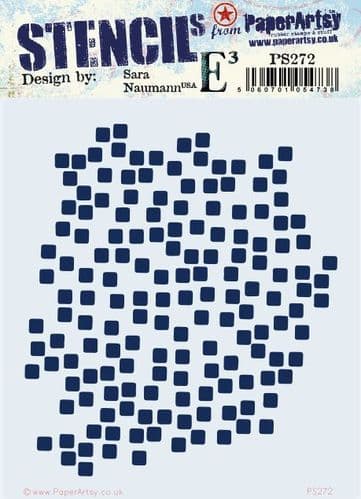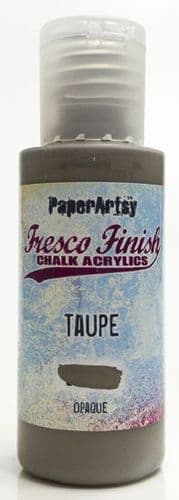Hi everyone, it's Floss (floss_workshop.art) with you today, and I'm here to share with you my love for recycled stitched mixed media pieces to show how different textures can be used as focal points. I quite often use recycled objects (mostly textiles) in a creative way...I'm sure, like me, you probably have already trained your partner and/or children not to throw certain papers or cardboard away without checking with you first, but have you tried stripping wire or shredding clothes to bring another element into the term mixed media?

Using fabric, thin metal and/or wire gives added interest, sometimes depth, and attention to detail to your work. My sewing machine definitely gets challenged and put through it's paces with what I put through it! With this project, I set out to stitch repurposed wire staves on with the sewing machine but with all good intent and purposes not all plans go to plan so to speak...and as you can see here my plan went sideways. The stripped wire still featured but was used in a different way to my initial idea. I'd like to think that sometimes when things don't quite go to plan it can set you on another quest...

I personally like to start by tearing/ripping the edges of my substrate against a ruler; you may prefer a straighter cleaner cut edge, but I do like to be able to ink the raw edges and often consider sewing from the artwork onto the mount area as a finishing touch, which, in my opinion, balances nicely with a raw edge. You could also try using a deckled edged ruler for a more controlled uneven ripped edge. I tend to use the heavier weighted papers or card stock as machine stitching tears holes through lighter weight paper leaving the stitching uneven or hanging.
I started with collaging some recycled papers that have a simple coloured map image on it. I didn't want a full colour image or just plain book pages as I wanted to use the map as a peek through bit of colour in an otherwise neutral design.
I used Gesso over some parts of the collage leaving some areas completely bare, by applying it mainly on the glued edges it will 'blend' the page so it looks more of an even surface and tone overall. (Apologies for no photo of this stage...) I like to scratch into the gesso with the tip of a palette knife whilst it is wet to create lines as another texture. You may have a favourite tool or pattern you like to use for this mark making step to personalise your work at this stage by scratching it or pressing it into the wet gesso. Adding the lines into the wet gesso will allow you to show different shades of the subsequent paints or inks that you use as they will penetrate the work at different depths therefore creating tones. This can be seen most prominently at the bottom right of the image below.

Using a sponge lightly dib dab dob the PaperArtsy Fresco Finish Chalk Acrylics in
Truffle and
Taupe through stencils. I find that when using a sponge, if after you have dabbed it into the paint, dab it off lightly before applying it through your stencil onto your work, it's better to build the colour slowly using less paint rather than having it possibly splodge under the sides of the stencil as there is too much on your sponge. I personally find a sponge easier to control than a stencil brush, but use what you are most comfortable with, but the same dabbing off paint so you're not overloaded applies.
I used
Truffle with
PS272 for this stage...followed by further stencil detail using
Taupe and
PS027. You can see below that I have squiggled and doodled white pen within the leaf design and embossed repetitive text so that only parts of the text is legible and some of it on top of each other randomly in the design.
I adore texture and hidden messages in my art, sometimes it's a personal care reminder to myself and other times it's caring messages to those I'm thinking about at the time of creating my work. Here it is simply creating an embossed texture using WOW Embossing Powder in Opaque Vanilla White WL03R (O) and random repeated stamping using Sara Naumanns rubber stamp set
ESN42. I do rather like way the "we are the dreamers of dreams" phrase within the words has a good connection with the music theme. Using the raised embossed words can act like a resist if you choose to use water based products at this stage to make the words stand out more with a wash over them if you wish, but I liked the contrast I created here without using one.

Now that my background was prepared I wanted to add some stitching details in. With the overall feel of the theme I chose being music I decided that I would add a stave (5 lines for music) as one of the focal points along with a treble clef. Here I was going to strip some old wires from a disused pc lead and attempt to put it through my sewing machine. I think my machine actually sighed with relief when I found that the wire was not pliable enough to move freely from either the bobbin or the top spool. Regardless of altering the bobbin tension the wire was too easy to bend and stop dead as it folded...and so, I decided to stitch the stave on using regular cotton thread. I went over each line three times to make each line heavier. I chose a light neutral colour thread as again I did not want it to detract from the words or the features yet to be added.

You can see where the metal thread would be stitched...over the ends of the 5 stave lines. Using an awl and a cutting mat, pierce the page to make it easier to sew the metal wires through the page. Strip your wires so that the plastic casing is removed and the metal is exposed. I stored my stripped wire around an old cotton reel as you can see above. Use either a wire stripper or a pair of old scissors to expose the wires by pulling the plastic off. Be careful not to snip or slip if you are using the scissors and work in a motion going away from yourself! Some wires have a metal foil wrapped around the wires that can also be stored wrapped around something for future use.
Different wires can hold different colour metals inside if you're lucky!
Using a regular needle sew the metal wire into your desired areas. I used masking tape to hold the first piece of wire in place. After stitching I taped over the wire on the reverse for security.
The wire can kink so I find it useful to guide it around my finger when stitching it. Multi strand wire is quite flexible and you can divide the strands in the same way as 6 strand embroidery floss if you like the details to be finer. Make sure you cut the wire with pliers/snips if you have them or an OLD pair of scissors as it will definitely blunt them!

I used stamp set ESN42 again to stamp details onto tissue paper to add to my design. By stamping onto acid free white tissue paper it allows you to play with the positioning of it before you commit and glue it into it's final designed space.
I cut an old jumper lengthways across the stitches so that it may fray rather than unravel. I cut the tights lengthways up the leg as they were ribbed to choose between for the treble clef detail I decided to use the jumper as the tights were too dark against the neutrals and I liked the small knitted texture rather than a dark rib.
In order to make the position of the treble clef easier I used a Frixon (black) pen (you can see it drawn in previous photos). Not only can the Frixon pen be erased by friction but by heat too, so a quick blast with your heat gun will get rid of it if you make a mistake or you've finished stitching...did you notice I used it under my stave lines too to guide my straight stitching?
I used FabriTac to stick the treble clef onto the work...do it little by little as the glue dries quite fast. Regular PVA or tacky glue could be used for this but it'll take longer to dry.
I love to free motion embroider onto my art pieces. By using an open toe foot whilst free motion embroidering your treble clef will make it easier to see where you are going. Add Ranger Archival Ink (Black Soot) to the edges of the mixed media art and enjoy!
Thank you so much for taking the time to read my post. I have really enjoyed making this mixed media piece and I hope that I may have inspired you to try using wire or textiles within your art and the stamps, stencils or colours that I chose. If you use this project as inspiration, or you follow the steps then please tag me in it on your social media as I'd love to see your own take on this. My original plan of threading my machine with wire may just have to be substituted with a visit to the local sewing shop for metallic thread or more patience with wire stripping and hand stitching...
I look forward to sharing more with you soon,
Happy creating,
Much love,
Floss x
Floss holds in person workshops in her purpose built workshop in East Sussex UK. More details can be found on her website at flossWORKSHOPart























What a feast for the eyes with all those amazing textural details! Congratulations on your first post Floss ❤️
ReplyDeleteI’m awe struck with the use of all the elements in your fab work of art. To the point that I had to share your use of computer cable with my hubby, who has a thing about collecting cables for his past time of “making noises” with synths😂
ReplyDeleteWow. What a wonderful first post!
ReplyDeleteMany thanks for your wonderful words ladies. Sue, I hope you used your husband's cables for something creative rather than noise lol
ReplyDeleteWhat a wonderful project. Love the neutral tones and all the textures and different elements. Xxx
ReplyDelete